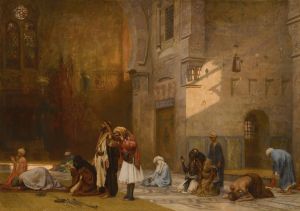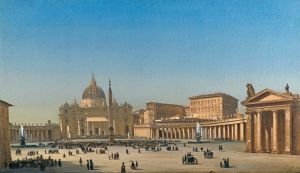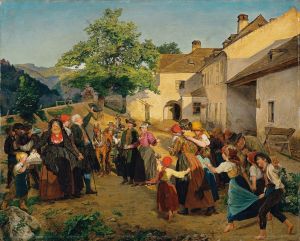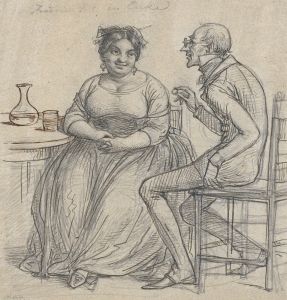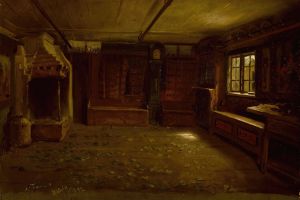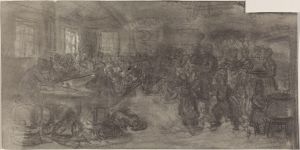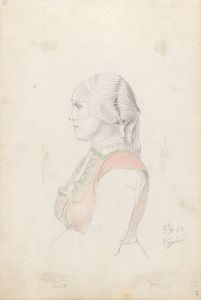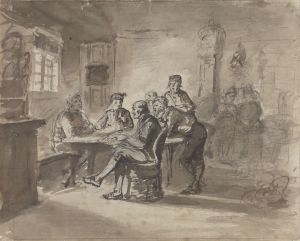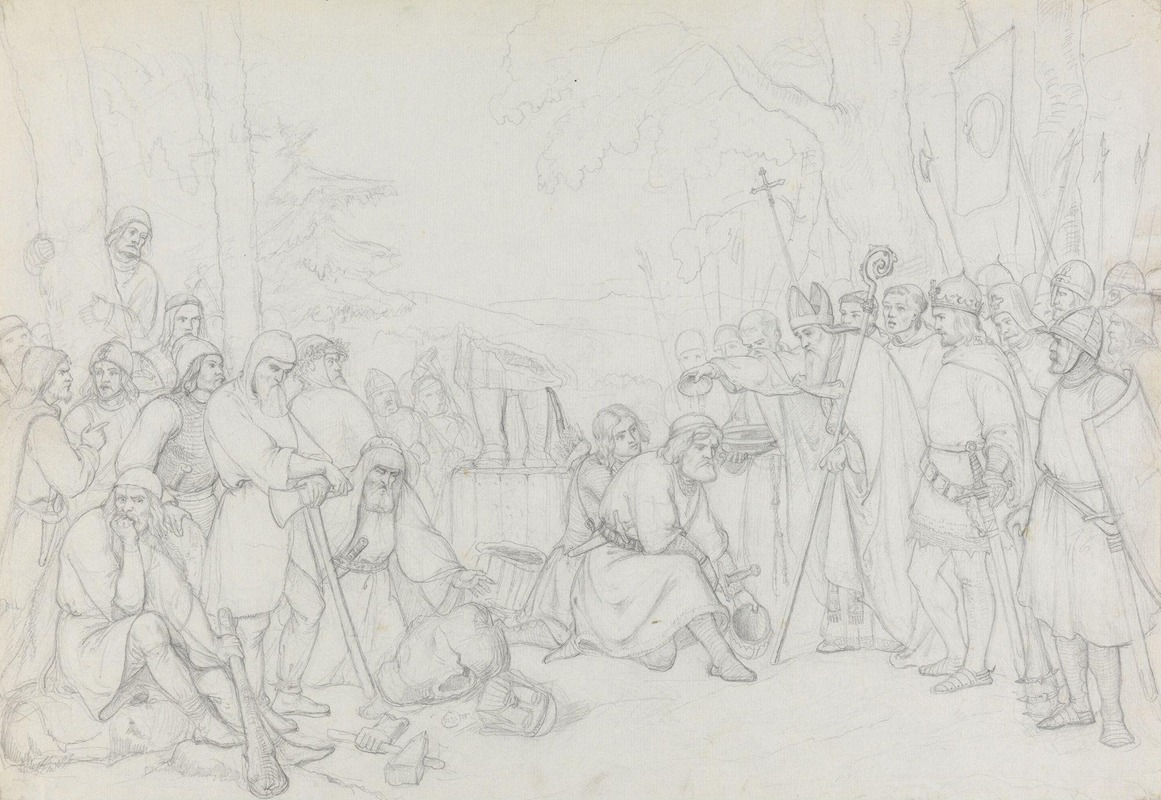
Dale Gudbrands dåp
A hand-painted replica of Adolph Tidemand’s masterpiece Dale Gudbrands dåp, meticulously crafted by professional artists to capture the true essence of the original. Each piece is created with museum-quality canvas and rare mineral pigments, carefully painted by experienced artists with delicate brushstrokes and rich, layered colors to perfectly recreate the texture of the original artwork. Unlike machine-printed reproductions, this hand-painted version brings the painting to life, infused with the artist’s emotions and skill in every stroke. Whether for personal collection or home decoration, it instantly elevates the artistic atmosphere of any space.
Adolph Tidemand's painting "Dale Gudbrands dåp" (The Baptism of Dale-Gudbrand) is a significant work in the canon of Norwegian art, capturing a pivotal moment in the Christianization of Norway. Adolph Tidemand, born on August 14, 1814, in Mandal, Norway, was a prominent painter known for his depictions of Norwegian history and folklore. His works are characterized by their attention to detail and historical accuracy, often drawing from Norway's rich cultural heritage.
"Dale Gudbrands dåp" was completed in 1852 and is part of Tidemand's broader effort to illustrate key events in Norwegian history. The painting depicts the legendary baptism of Dale-Gudbrand, a local chieftain, by the missionary King Olaf II of Norway, also known as Saint Olaf. This event is said to have taken place in the early 11th century during Olaf's efforts to convert the Norse people to Christianity.
The scene is set in a traditional Norwegian landscape, with the figures of King Olaf and Dale-Gudbrand prominently featured. King Olaf is depicted as a commanding and authoritative figure, symbolizing the power and influence of the Christian faith. Dale-Gudbrand, on the other hand, is portrayed with a sense of reverence and submission, reflecting his acceptance of the new religion. The painting captures the tension and drama of this historical moment, highlighting the cultural and religious transformation that was occurring in Norway at the time.
Tidemand's attention to detail is evident in the clothing and accessories of the figures, which are meticulously rendered to reflect the period's historical accuracy. The use of light and shadow in the painting enhances the dramatic effect, drawing the viewer's attention to the central figures and the significance of the event. The landscape in the background, with its rugged terrain and natural beauty, serves as a reminder of Norway's unique environment and the challenges faced by those who sought to bring about change.
"Dale Gudbrands dåp" is not only a representation of a historical event but also a reflection of the broader themes of cultural identity and national pride that were prevalent in Norway during the 19th century. Tidemand's work played a crucial role in the development of a national consciousness, as it celebrated the country's history and traditions at a time when Norway was seeking to establish its own identity separate from its union with Sweden.
The painting is housed in the National Gallery in Oslo, where it continues to be an important piece of Norway's artistic and cultural heritage. It is a testament to Tidemand's skill as a painter and his dedication to preserving the stories and legends of Norway's past. Through "Dale Gudbrands dåp," viewers are offered a glimpse into a transformative period in Norwegian history, marked by the intersection of pagan traditions and the spread of Christianity.





